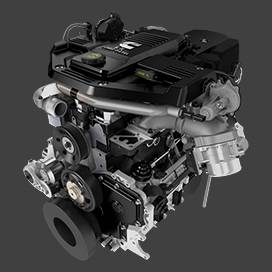Sep . 30, 2024 18:22 Back to list
Steel Brake Drums for Enhanced Performance and Durability in Automotive Applications
Steel Brake Drums Essential Components of Vehicle Braking Systems
In the realm of automotive engineering, safety is paramount, and one of the critical components contributing to a vehicle's safety is the braking system. Among the various elements of the braking system, steel brake drums play a significant role, particularly in drum brake systems. This article explores the importance, design, and maintenance of steel brake drums, providing insights into their functionality and relevance in modern vehicles.
Understanding Brake Drums
A brake drum is a cylindrical component that rotates with the wheel of the vehicle. When the driver applies the brakes, brake shoes push against the inside surface of the drum, creating friction that slows down or stops the vehicle. Steel is often chosen as the material for brake drums due to its strength, durability, and ability to withstand high temperatures generated during braking. This makes steel brake drums a vital component in heavy-duty vehicles and various automotive applications.
Importance of Steel Brake Drums
1. Durability and Longevity Steel brake drums are renowned for their toughness and resistance to wear. They can endure the harsh operating conditions often found in commercial vehicles, such as trucks and buses, where frequent and intense braking is common. The resilience of steel ensures that brake drums can maintain their structural integrity even under significant stress, extending their service life and reducing the need for frequent replacements.
2. Heat Dissipation One of the primary functions of brake drums is to dissipate heat generated from friction during braking. Steel has excellent thermal conductivity, allowing it to dissipate heat more efficiently compared to other materials. This is crucial in preventing brake fade, a condition where brakes lose their effectiveness due to overheating. When brake drums are able to manage heat effectively, they contribute to more consistent braking performance.
3. Cost-Effectiveness While there are alternative materials available for brake drums, such as aluminum and composite materials, steel brake drums often present a more economical choice, especially for heavy-duty applications. Their lower manufacturing costs and durability mean they provide long-term value for fleet operators and individual vehicle owners alike.
4. Safety The safety of a vehicle is significantly influenced by the performance of its braking system. Steel brake drums offer reliable and predictable braking behavior. Properly designed and maintained steel drums contribute to shorter stopping distances, thereby enhancing the overall safety of the vehicle and its occupants.
Design and Manufacturing
steel brake drums

The design of steel brake drums is crucial for their effectiveness and performance. A well-designed drum features specific dimensions, thickness, and surface finish that optimize its interaction with brake shoes. Factors such as weight, balancing, and the geometry of the drum also play a critical role in ensuring efficient performance.
Manufactured using advanced processes such as casting and machining, steel brake drums are often subjected to rigorous quality control measures to ensure they can withstand the demands of varied driving conditions. Innovations in manufacturing techniques have also led to the development of brake drums with better wear resistance and lower noise levels, further enhancing their usability.
Maintenance and Troubleshooting
Regular maintenance of steel brake drums is essential for ensuring optimal performance and safety. Here are some key maintenance tips
1. Inspection Periodically inspect brake drums for signs of wear and tear, such as scoring, cracking, or significant discoloration. Early detection of issues can prevent more severe damage.
2. Cleaning Keep the brake drum and surrounding components clean to prevent contaminants from affecting braking performance. Dust and debris can lead to a reduction in braking efficiency and can also contribute to uneven wear.
3. Resurfacing If the inner surface of the brake drum becomes uneven, resurfacing it may restore proper functionality. This process involves removing a thin layer of the drum’s surface to create a smooth, even finishing.
4. Replacement When brake drums become too worn or damaged, they should be replaced immediately to ensure the safety of the vehicle.
Conclusion
Steel brake drums are essential components in many vehicles, providing effective braking performance and contributing to safety on the roads. With their durability, cost-effectiveness, and efficient heat dissipation, steel brake drums continue to be a preferred choice in the automotive industry. Regular maintenance and timely replacements will ensure that they function optimally, safeguarding both drivers and passengers. As vehicle technology evolves, the importance of reliable components like steel brake drums remains a cornerstone of safe automotive design.
-
HINO Industrial Solutions - ¡Ң���ຽ��е��������˾ | Advanced Efficiency&Customization
NewsJul.13,2025
-
HINO Industrial Efficiency Solutions - ¡Ң���ຽ��е��������˾
NewsJul.13,2025
-
HINO Industrial Solutions - ¡Ң���ຽ��е��������˾ | Advanced Technology&Reliability
NewsJul.13,2025
-
HINO Industrial Efficiency-Jiangsu Hino Industrial|Productivity Optimization&Cost Reduction
NewsJul.12,2025
-
HINO-¡Ң���ຽ��е��������˾|Advanced Industrial Solutions&Energy Efficiency
NewsJul.12,2025
-
Premium Brake Drum Iveco – Durable Drum Brake Drum & Brake Shoe Solutions
NewsJul.08,2025
